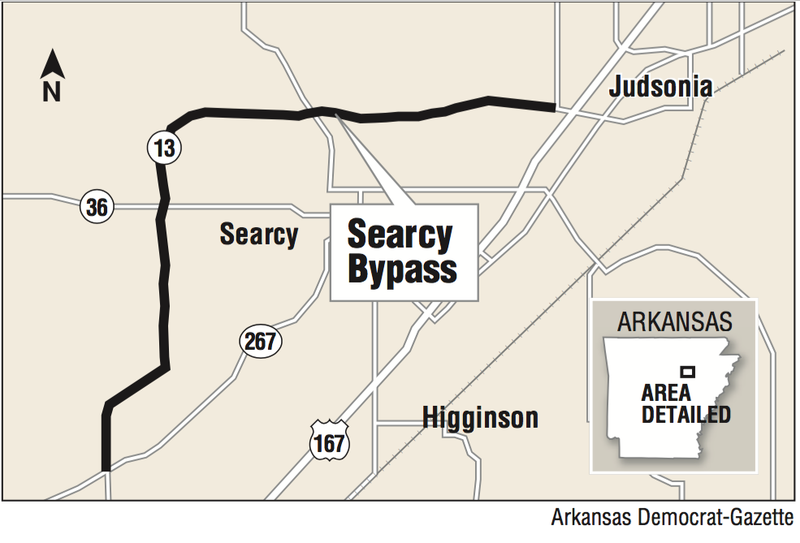After 20 years of planning, passage of a sales tax and nearly six years of construction spread over three projects totaling $53 million, the city of Searcy has its bypass.
Also called the Arkansas 13 Connector, the 13-mile, two-lane highway going from U.S. 67/167 at McRae south of Searcy and along the White County seat's western edge to U.S. 67/167 at Judsonia on the north side of the city is open to traffic.
The bypass has accomplished its immediate goal of taking trucks and other through traffic off city streets and gives motorists another option to more safely and quickly navigate the county, said Buck Layne, president of the Searcy Regional Chamber of Commerce.
Rather than going through downtown, motorists from Memphis, for instance, can use the bypass to make their way over to Greers Ferry Lake in Heber Springs or residents on the west side of Searcy can use it to travel to and from Little Rock, he said.
The bypass also opened up new land for economic development, but Layne said that can wait. For now, he said, everyone is just happy it's finished.
"It's very nice, it's pretty, it's clean," Layne said. "Everybody is talking about it."
He and a group of city, county and state dignitaries will mark the opening of the bypass with a ribbon-cutting ceremony at 11 a.m. Tuesday on the parking lot of the Veterans of Foreign Wars Post 2330 at 2107 Davis Drive in Searcy.
The route has been on the Searcy master street plan for 20 years, with much of the route considered a part of the city's long-range needs, Layne said.
But that changed in the early part of the previous decade when natural gas exploration and production in the Fayetteville Shale exploded.
"We had hundreds of trucks going through downtown every day," Layne recalled.
A countywide sales tax proposal that would have helped pay for development of the bypass in 2011 failed. The city passed its own 1 percent sales tax three months later to provide $3 million toward the project, with White County kicking in $3 million.
Projects in which local jurisdictions provide money often are fast-tracked by the Arkansas Department of Transportation, which used a mix of federal and state money to pay for the rest.
The new route was built over three sections beginning in 2012.
The first project was the middle section, extending Arkansas 13 to Arkansas 36. It was awarded a $16.4 million contract in 2012. The 5-mile section opened in 2016.
The second section, going 4 miles between Arkansas 16 and U.S. 67/167 at Judsonia, was awarded a $16.3 million contract in 2015. The final section, a little less than 4 miles in length, was awarded an $11.4 million contract in 2016.
Other costs included design, purchasing rights of way, relocating utilities and construction inspection, highway officials said.
"This is going to be a great asset for our community," Layne said.
Metro on 05/28/2018

